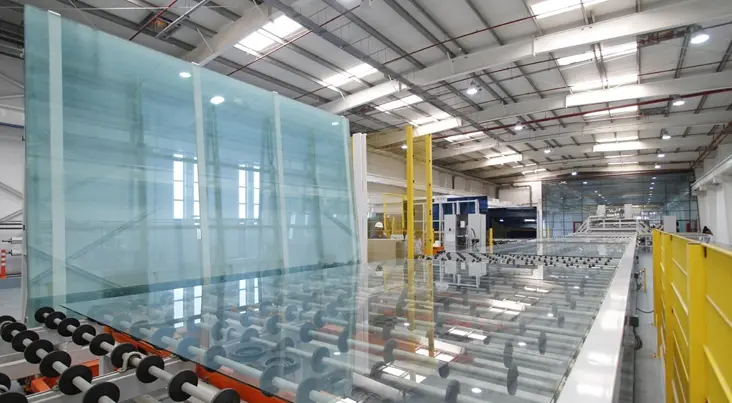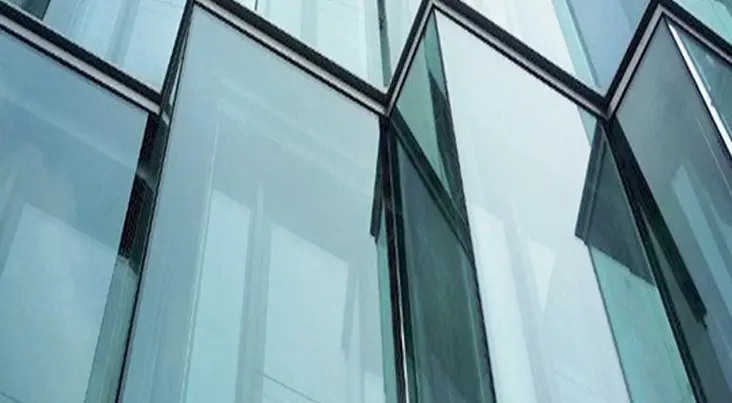The History Of Windows

It’s easy to take windows for granted, they look simple enough, it’s just a hole in the wall covered by glass. Most of the time you are not even looking at them, you are looking through them. And yet when we consider architecture, historical or modern, basic to complex, windows are essential for structure, aesthetics and wellbeing.
If we take any time at all to really look at a window and consider it’s foundation, we can quickly see that it is complex, intricate and offers far more than a view. Add to that the ability, flexibility and incredible range of modern technology used in building design and creation, and we get a window of limitless possibility, for reach, facade and opportunity that’s well worth looking into.
What is the definition of a window?
The word window comes from Old Norse: wind+eye, translated loosely to mean an eye of wind.
A window is any opening purpose-built to allow light in. It’s not just the glass. The term ‘window’ refers to the whole structure that allows in light. Depending on the complexity of the design it can include the opening, the glass, the sash and the frame. It doesn’t need to be see-through, just translucent.
Windows can be placed in walls, in a door, or within a roof or as part of a vehicle. As well as light windows can also (but not always) allow air and or sound to pass through as well.
When were windows first made?
The Romans were the first to engineer glass windows in 100 AD, however, long before this windows were used all over the world in different ways, depending on what was at hand in those early times.
Glass itself was used in ancient history, dating back as far as the ancient Egyptians, although unrecorded use of glass may go back even further. However, these were blown glass vessels and not used in windows.
Open windows came first, over three thousand years ago in the 13th century BC. These were uncovered openings cut into the roof to allow light inside during the day. It’s not difficult to see how wild weather made these openings hard to live with. Next the openings were covered with cloth, wood or animal hides that could be opened when the weather was fine and battened down to keep out draft and cold. Before long these were upgraded to hinged shutters that could be easily opened and closed.
In other parts of the world, in ancient China, Japan and Korea, the windows were made of paper.
In England flattened pieces of animal horn were used before glass. These translucent pieces were replaced by glass in the early 17th century. Glass windows at this time became very common but they were small, due to limited technology so the small chunks of glass were fixed into box timber frames.
In historic buildings you can still see examples of windows from Georgian times in the 1700s. Here a window had six glass panes per sash and although they were much better quality due to enhanced technology, the glass was still distorted. Air bubbles, curved ripples and warping can still be seen today in these English buildings.
Even though glass windows were made by the Romans in100 AD, these early examples were only designed for light. The glass was so thick, small and clumsy that nothing could be seen through them.
Later the Romans would become accomplished at creating clear glass as well as coloured glass and set the foundations for modern glass engineering.
It wasn’t until 1884 that glass as we know it today became possible. It was through the engineering work of Henry Bessemer, who discovered that he could automate glass manufacturing by pouring liquid glass onto liquid tin. “Floating glass” meant that large sheets of glass could be created easily and evenly. It was this early technology that led to the creation of modern floor-to-ceiling windows.
Why do we have double glazed windows?
Sealed double glazed windows became possible in the 1930s and are now common for modern buildings. There are even triple-glazed windows here in Australia. It is where a double thickness of glass is sealed to create a stronger window.
Glazing and double glazing (and triple glazing) helps protect the glass, reduce noise and provide temperature control within buildings. Before this technology, however, there were storm windows.
With storm windows sashes allowed for a second set of glass to be inserted into the frame during winter months, meaning that the glass was doubled. These extra panes were removed again in summer and shutters or fly screens were attached through the summer months. The double-layer not only protected the glass but also increased energy efficiency, the very first double glaze.
What are window frames made of?
Frames are also part of the window. While they were previously needed to keep the glass secure, they now have a much bigger purpose. Typically, energy efficiency is the first thing in mind when building modern window frames. Builders are required to comply with energy standards and reach a certain energy efficiency rating for a building to be approved. For this reason frame materials used are wood, timber-aluminium composites, thermally broken aluminium and uPVC.
Where the windows face (north being the most optimal) will also affect the building design in terms of window size and eves to keep off the sun.
As well as size and frame material another big factor is airtightness. Drafts sweeping in and temperature-controlled air leaking out are big contributors to high energy use, so sealing in the glass and frame to prevent any airflow is an important task.
What’s the best style of window for energy efficiency?
Tilt and turn windows are technologically advanced and provide the best flexibility and highest insulation value on the market. These windows can be sealed shut and are hinged to open a variety of ways, meaning you can open them (or close them) to meet the needs of the weather, no matter how quickly that weather changes.
How is glass made?
Glass is simply sand heated to extremely high temperatures. When it reaches around 1700°C it becomes liquid that can be manipulated and treated to become glass when cool. White silica sand is the type preferred for window panes because the colour is so pure and clean.
To help keep manufacturing costs (energy) down, the melting temperature of sand can be reduced to as low as 750 °C by adding sodium carbonate, however, this can mean the glass is less durable so limestone is introduced to help act as a stabiliser.
After the hot mix is ready and poured into the required shape and thickness the glass is left to cool. The slow cooling process is called Annealing and it’s essential in order for the glass to be strong. If completed incorrectly or too quickly the glass is prone to cracking or even spontaneous shattering.

What do Glaziers do?
A glazier is employed to handle all the glasswork in a building or project, either as repairs or modifications to an existing building, renovation or extension or complete new build. Their job is to measure, shape, cut and fit the glass according to the building and work plans. This work can be done in residential, community or commercial properties or completed off-site and shipped as a whole unit (for example for vehicles or mirrors).
Glass can be found in windows and doors, including decorative pieces like stained glass, as well as skylights, shower screens and kitchen splashbacks.
What are glazier’s tasks and duties?
Every glass job is different because there are always environmental factors to be taken into account, both within the building shape and size as well as the external factors like wind, sun and rain. Using the building plans a glazier will assess what is required of each job, including glass type and measuring. They will pick the appropriate places to mark, cut and drill the glass in accordance with the blueprints or designs and environmental elements.
Rough edges will need to be smoothed with a belt sander or smoothing wheels, and any excess glass trimmed.
It is the glazier’s responsibility to dispose of any excess glass, broken glass or defect glass safely as well as inspect all glass going in for any sign of weakness or defect.
How can I become a glazier in Australia?
Glaziers are typically individuals who find satisfaction in practical tasks. There are three main streams of glass work undertaken; cutting, smoothing edges and glass fitting.
Glaziers can be self-employed (with their own glazing tools), which is best suited for residential jobs, employed by glass processing factories or outlets or hardware suppliers, or hired through a small business.
While you do not need formal qualifications to work as a glazier, it is usual for apprentices to complete a Certificate III in Glass and Glazing as part of their training.
Here are our recommendations to begin your career:
- Look at completing Glass and Glazing qualifications
Most apprentices choose to do the Certificate III in Glass and Glazing (MSF30418) part-time (three years). You can also choose to do the course full time (1 year study). Check to see if you need any foundation courses to begin. The Certificate II in Glass and Glazing (MSF20413) is also available for those who need additional study.
- Get your White Card
The White Card is a Construction Induction Card which grants you access to any construction site in Australia. Having this widens your work options and gives you access to some of Australia’s biggest building brands. To get this, apply to become a Certified Glazier with the Australian Glass Glazing Association. The next step up from this a Master Glazier.
- Choose your field of expertise.
Now that you are a certified or master glazier working all over Australia and perfecting your work, it’s time to master your skill. If you have a particular passion in glazing you can become specialised in areas like bevelling, embossing, etching or silvering.
It’s easy to take windows for granted, they look simple enough, it’s just a hole in the wall covered by glass. Most of the time you are not even looking at them, you are looking through them. And yet when we consider architecture, historical or modern, basic to complex, windows are essential for structure, aesthetics and wellbeing.
If we take any time at all to really look at a window and consider it’s foundation, we can quickly see that it is complex, intricate and offers far more than a view. Add to that the ability, flexibility and incredible range of modern technology used in building design and creation, and we get a window of limitless possibility, for reach, facade and opportunity that’s well worth looking into.
What is the definition of a window?
The word window comes from Old Norse: wind+eye, translated loosely to mean an eye of wind.
A window is any opening purpose-built to allow light in. It’s not just the glass. The term ‘window’ refers to the whole structure that allows in light. Depending on the complexity of the design it can include the opening, the glass, the sash and the frame. It doesn’t need to be see-through, just translucent.
Windows can be placed in walls, in a door, or within a roof or as part of a vehicle. As well as light windows can also (but not always) allow air and or sound to pass through as well.
When were windows first made?
The Romans were the first to engineer glass windows in 100 AD, however, long before this windows were used all over the world in different ways, depending on what was at hand in those early times.
Glass itself was used in ancient history, dating back as far as the ancient Egyptians, although unrecorded use of glass may go back even further. However, these were blown glass vessels and not used in windows.
Open windows came first, over three thousand years ago in the 13th century BC. These were uncovered openings cut into the roof to allow light inside during the day. It’s not difficult to see how wild weather made these openings hard to live with. Next the openings were covered with cloth, wood or animal hides that could be opened when the weather was fine and battened down to keep out draft and cold. Before long these were upgraded to hinged shutters that could be easily opened and closed.
In other parts of the world, in ancient China, Japan and Korea, the windows were made of paper.
In England flattened pieces of animal horn were used before glass. These translucent pieces were replaced by glass in the early 17th century. Glass windows at this time became very common but they were small, due to limited technology so the small chunks of glass were fixed into box timber frames.
In historic buildings you can still see examples of windows from Georgian times in the 1700s. Here a window had six glass panes per sash and although they were much better quality due to enhanced technology, the glass was still distorted. Air bubbles, curved ripples and warping can still be seen today in these English buildings.
Even though glass windows were made by the Romans in100 AD, these early examples were only designed for light. The glass was so thick, small and clumsy that nothing could be seen through them.
Later the Romans would become accomplished at creating clear glass as well as coloured glass and set the foundations for modern glass engineering.
It wasn’t until 1884 that glass as we know it today became possible. It was through the engineering work of Henry Bessemer, who discovered that he could automate glass manufacturing by pouring liquid glass onto liquid tin. “Floating glass” meant that large sheets of glass could be created easily and evenly. It was this early technology that led to the creation of modern floor-to-ceiling windows.
Why do we have double glazed windows?
Sealed double glazed windows became possible in the 1930s and are now common for modern buildings. There are even triple-glazed windows here in Australia. It is where a double thickness of glass is sealed to create a stronger window.
Glazing and double glazing (and triple glazing) helps protect the glass, reduce noise and provide temperature control within buildings. Before this technology, however, there were storm windows.
With storm windows sashes allowed for a second set of glass to be inserted into the frame during winter months, meaning that the glass was doubled. These extra panes were removed again in summer and shutters or fly screens were attached through the summer months. The double-layer not only protected the glass but also increased energy efficiency, the very first double glaze.
What are window frames made of?
Frames are also part of the window. While they were previously needed to keep the glass secure, they now have a much bigger purpose. Typically, energy efficiency is the first thing in mind when building modern window frames. Builders are required to comply with energy standards and reach a certain energy efficiency rating for a building to be approved. For this reason frame materials used are wood, timber-aluminium composites, thermally broken aluminium and uPVC.
Where the windows face (north being the most optimal) will also affect the building design in terms of window size and eves to keep off the sun.
As well as size and frame material another big factor is airtightness. Drafts sweeping in and temperature-controlled air leaking out are big contributors to high energy use, so sealing in the glass and frame to prevent any airflow is an important task.
What’s the best style of window for energy efficiency?
Tilt and turn windows are technologically advanced and provide the best flexibility and highest insulation value on the market. These windows can be sealed shut and are hinged to open a variety of ways, meaning you can open them (or close them) to meet the needs of the weather, no matter how quickly that weather changes.
How is glass made?
Glass is simply sand heated to extremely high temperatures. When it reaches around 1700°C it becomes liquid that can be manipulated and treated to become glass when cool. White silica sand is the type preferred for window panes because the colour is so pure and clean.
To help keep manufacturing costs (energy) down, the melting temperature of sand can be reduced to as low as 750 °C by adding sodium carbonate, however, this can mean the glass is less durable so limestone is introduced to help act as a stabiliser.
After the hot mix is ready and poured into the required shape and thickness the glass is left to cool. The slow cooling process is called Annealing and it’s essential in order for the glass to be strong. If completed incorrectly or too quickly the glass is prone to cracking or even spontaneous shattering.

What do Glaziers do?
A glazier is employed to handle all the glasswork in a building or project, either as repairs or modifications to an existing building, renovation or extension or complete new build. Their job is to measure, shape, cut and fit the glass according to the building and work plans. This work can be done in residential, community or commercial properties or completed off-site and shipped as a whole unit (for example for vehicles or mirrors).
Glass can be found in windows and doors, including decorative pieces like stained glass, as well as skylights, shower screens and kitchen splashbacks.
What are glazier’s tasks and duties?
Every glass job is different because there are always environmental factors to be taken into account, both within the building shape and size as well as the external factors like wind, sun and rain. Using the building plans a glazier will assess what is required of each job, including glass type and measuring. They will pick the appropriate places to mark, cut and drill the glass in accordance with the blueprints or designs and environmental elements.
Rough edges will need to be smoothed with a belt sander or smoothing wheels, and any excess glass trimmed.
It is the glazier’s responsibility to dispose of any excess glass, broken glass or defect glass safely as well as inspect all glass going in for any sign of weakness or defect.
How can I become a glazier in Australia?
Glaziers are typically individuals who find satisfaction in practical tasks. There are three main streams of glass work undertaken; cutting, smoothing edges and glass fitting.
Glaziers can be self-employed (with their own glazing tools), which is best suited for residential jobs, employed by glass processing factories or outlets or hardware suppliers, or hired through a small business.
While you do not need formal qualifications to work as a glazier, it is usual for apprentices to complete a Certificate III in Glass and Glazing as part of their training.
Here are our recommendations to begin your career:
- Look at completing Glass and Glazing qualifications
Most apprentices choose to do the Certificate III in Glass and Glazing (MSF30418) part-time (three years). You can also choose to do the course full time (1 year study). Check to see if you need any foundation courses to begin. The Certificate II in Glass and Glazing (MSF20413) is also available for those who need additional study.
- Get your White Card
The White Card is a Construction Induction Card which grants you access to any construction site in Australia. Having this widens your work options and gives you access to some of Australia’s biggest building brands. To get this, apply to become a Certified Glazier with the Australian Glass Glazing Association. The next step up from this a Master Glazier.
- Choose your field of expertise.
Now that you are a certified or master glazier working all over Australia and perfecting your work, it’s time to master your skill. If you have a particular passion in glazing you can become specialised in areas like bevelling, embossing, etching or silvering.
Blog
See AllNovember 11, 2020
How important are the fittings and glues used in my glass fence?
Though there is no substantiating proof that Emmert Wolf wrote the quote, “A man is only as good as his tools”, but it is meaningful. Everything we buy costs so much, and perfection is everyone’s goal. When we spend the...
Read MoreNovember 11, 2020
What are the most important things to know when getting a quote for glass in your home?
When you have decided to renovate your house, add a pool or granny flat, there is a lot of planning to do. When you are deciding on what electrician to use, plumber and others, you want to use a reputable...
Read MoreNovember 11, 2020
Why you need an expert to install glass in your home or business!
Glass surrounds our lives at home, work and just about everywhere! It keeps the weather out, lets the light in and can connect us to the outside. It is no wonder glass has become not just a necessity in some...
Read MoreOur Brands




Want to receive our monthly product updates?
Yes please! Keep me up to date on the latest products, eCatalogues, inspiration and more






